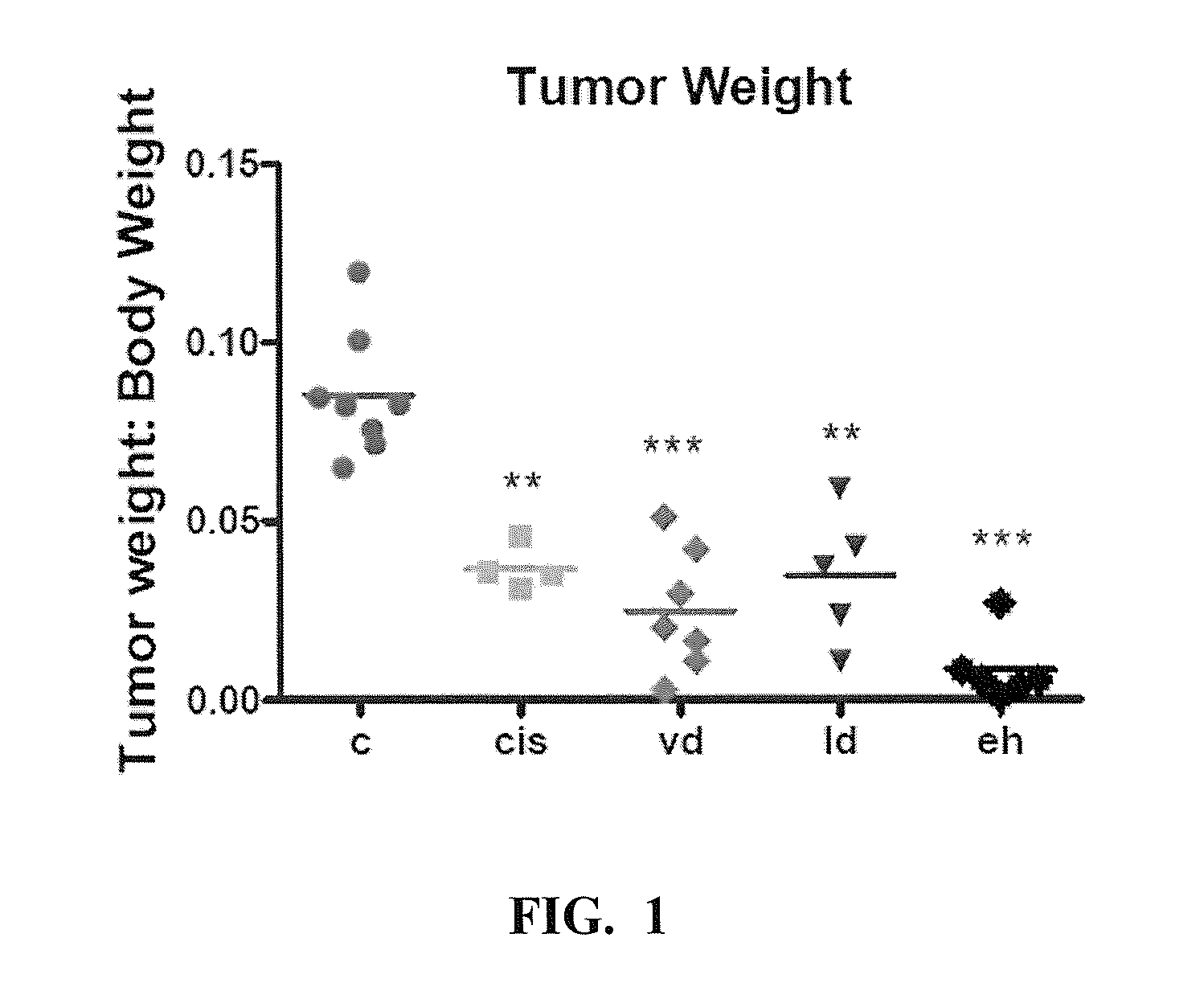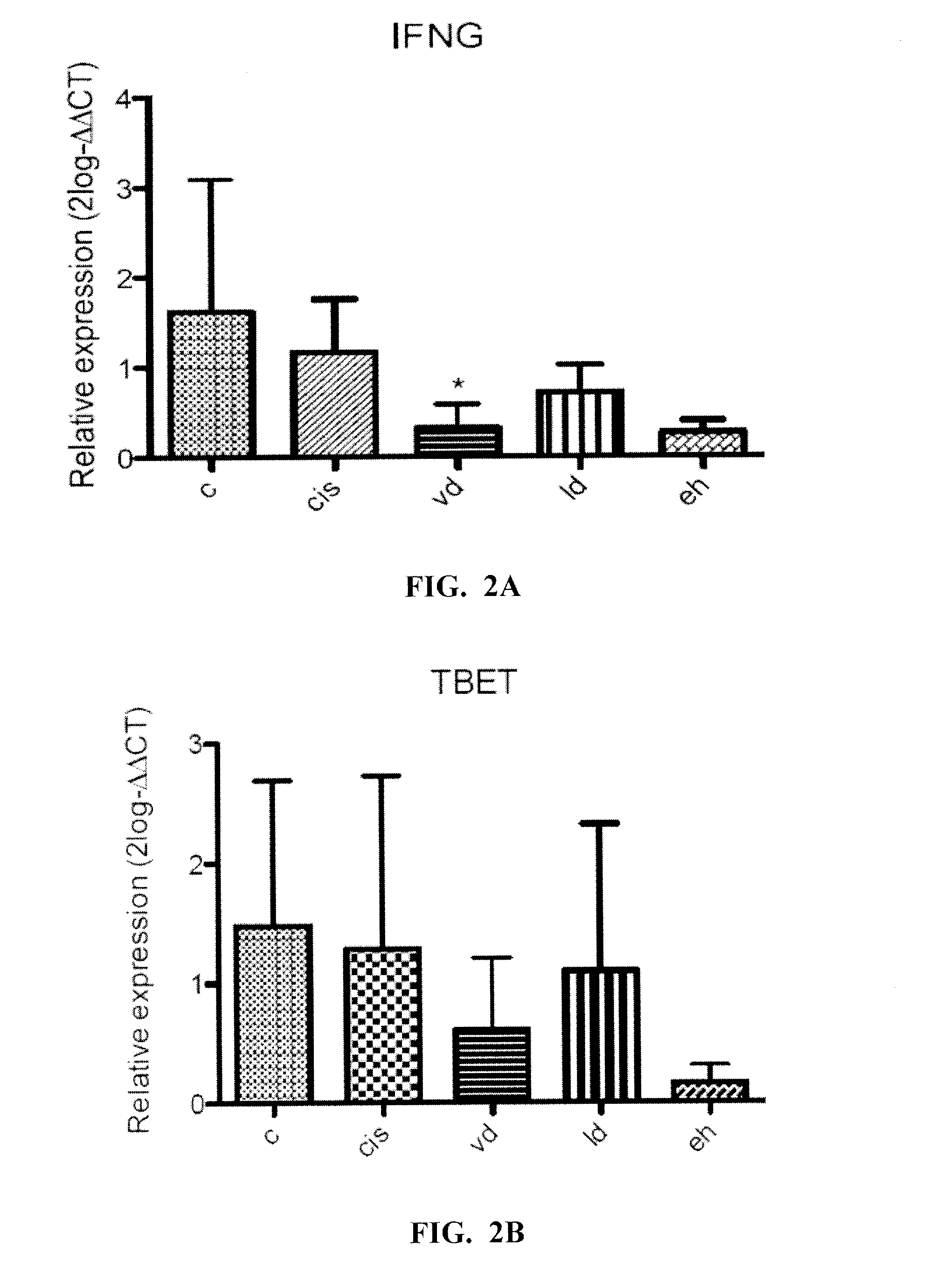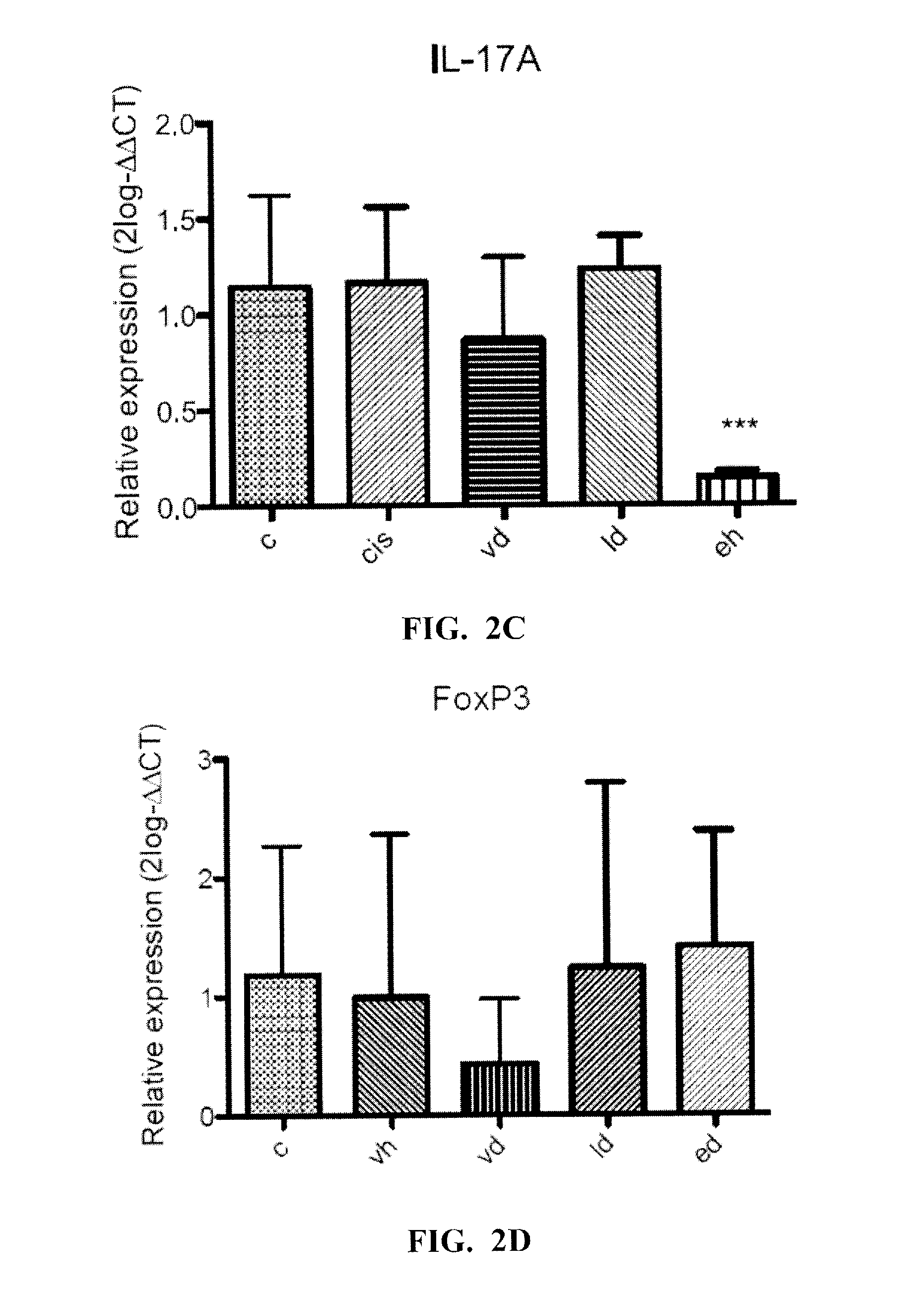Method and Compositions for Treating Cancer Using Probiotics
a cancer and probiotic technology, applied in the direction of drug compositions, biocide, unknown materials, etc., can solve the problems of high cost of standard treatments, high cost of molecular targeted therapy using sorafenib as recommended by nccn/aasld/jsh/esmo guideline, and the average cost of us$6,000 per month
- Summary
- Abstract
- Description
- Claims
- Application Information
AI Technical Summary
Benefits of technology
Problems solved by technology
Method used
Image
Examples
example 1
ProHep Treatment Reduces Tumor Size
[0078]The effect of a probiotic mixture of bacteria was tested on an animal model of HCC. Male C57BL / 6N mice (5-6 weeks-old) were fed daily with a therapeutically effective amount of probiotics for a total of 45 days, starting one week before subcutaneous tumor inoculation with 1×107 Hepa106 cells. Tumor size was found to be significantly smaller in animals fed with both heat-inactivated bacteria and viable bacteria (FIG. 1). Analysis on VSL#3® groups revealed that smaller tumor size appears to be correlated with lower expression level of Treg marker TGFB (R=0.5, p<0.05), Th17 marker RORC (R=0.5, p<0.05), and angiogenic markers ANGPT2 (R=0.6, p<0.05), TIE1 (R=0.6, p<0.01), VE-cadherin (R=0.7, p<0.005), suggesting that probiotics consumption may modulate T cell subsets in tumor and may this may have an impact on tumor angiogenesis (FIGS. 2A-2L).
[0079]In another study, C57BL6 / N mice were inoculated with 1×107 Hepa1-6 tumor cells subcutaneously and tu...
example 2
Tumor Growth is Limited by Increased Hypoxia
[0080]Confocal images of whole tumor sections with TO-PRO-3 staining for dead cells is shown in FIG. 4A. Scale bar, 200 μm. FIGS. 4B-4D show immunostaining for representative tumor sections for Ki67 (FIG. 4B), caspase 3(FIG. 4C) and GLUT-1 (FIG. 4D) (blue) and CD31 (red). Scale bar, 50 μm. Significant increase in area of cell death was observed in ProHep groups, however, there was no significant difference in the number of proliferating cells (Ki67+) and apoptotic cells (caspase-3+), suggesting that reduced tumor size is not related to reduced growth and increased apoptosis, but is related to increased necrosis. Meanwhile, significant increase in hypoxic area (GLUT-1) was found in the ProHep prevention (p) group, suggesting that reduced tumor size is likely to be related to hypoxia-induced cell death.
example 3
ProHep Inhibits Angiogenesis in a Subcutaneous HCC Model
[0081]Microvessel density of representative tumor sections is shown in FIG. 5A. FIG. 5B shows images of three-dimensional models obtained by confocal Z stacks, after superimposition of multiple confocal planes. Significantly smaller microvessel density, relative vascular area and vessel sprouting were observed in ProHep groups as compared to control. (*p<0.05; **, p<0.01; ***, p<0.001).
PUM
 Login to View More
Login to View More Abstract
Description
Claims
Application Information
 Login to View More
Login to View More - R&D
- Intellectual Property
- Life Sciences
- Materials
- Tech Scout
- Unparalleled Data Quality
- Higher Quality Content
- 60% Fewer Hallucinations
Browse by: Latest US Patents, China's latest patents, Technical Efficacy Thesaurus, Application Domain, Technology Topic, Popular Technical Reports.
© 2025 PatSnap. All rights reserved.Legal|Privacy policy|Modern Slavery Act Transparency Statement|Sitemap|About US| Contact US: help@patsnap.com



